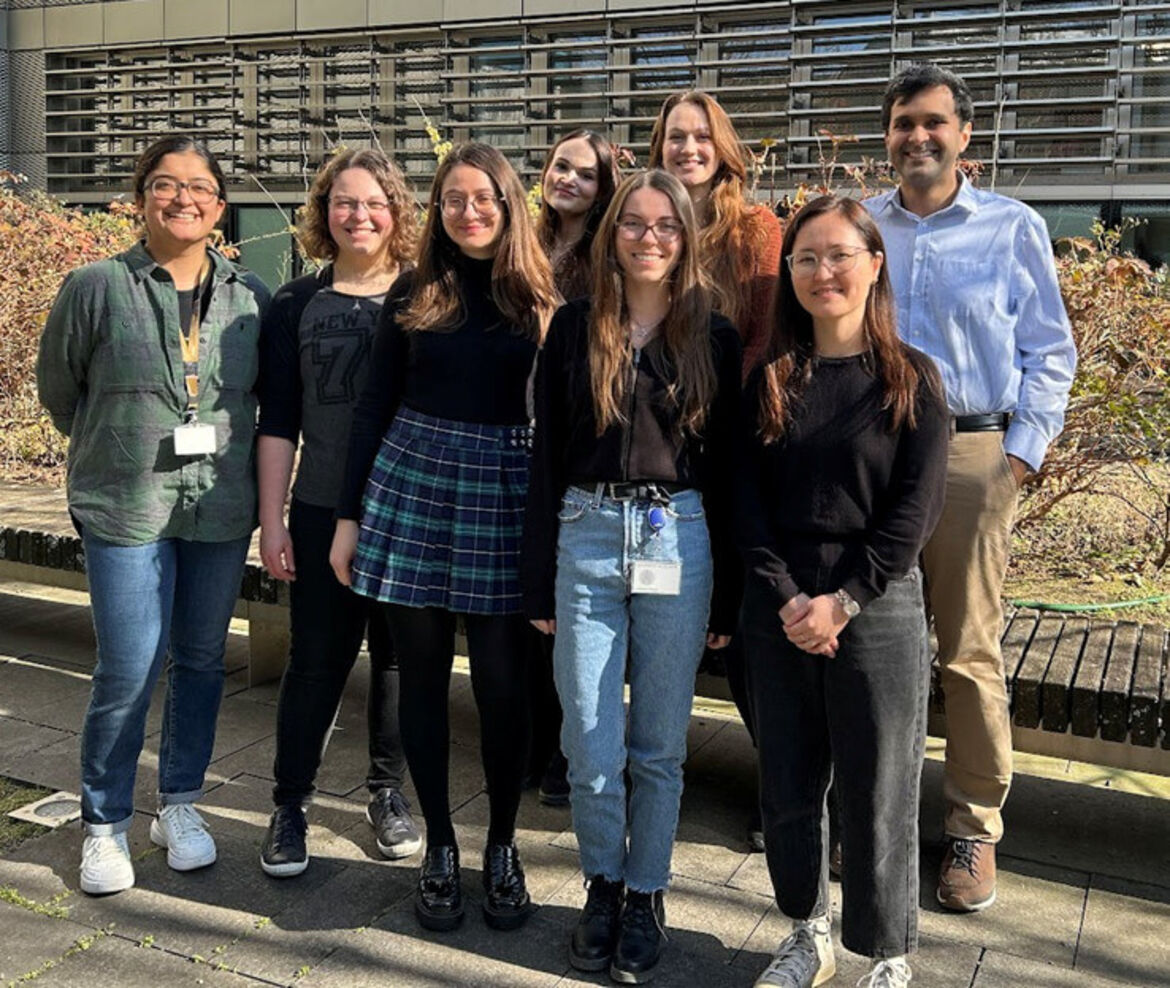Research Group Thacker
Group Leader Dr. Vivek Thacker

Research Interests
The Thacker lab works at the intersection of infectious disease, immunology, bioengineering, and the systems biology of multicellular systems. We develop and use engineered human organ-chip/organoid models in combination with animal models and high-end microscopy to study chronic infectious diseases and identify new therapeutic strategies. We approach these topics with an interdisciplinary mindset, and an interest in the role of biophysics in host-pathogen interactions permeates our work.
A major focus of our research efforts is on Tuberculosis (TB). TB is a chronic, complex disease of the global south that regrettably still causes over 1 million deaths per year worldwide. There are no effective adult vaccines, and even the newest antibiotic regimens are 4 months long. We focus on how Mycobacterium tuberculosis (Mtb), a slow-growing BSL-3 pathogen adapts to the unique lung microenvironment, and how such “early” interactions influence and shape disease progression.
The modularity of organ-chip/organoids and compatibility with imaging and spatial omics captures infection dynamics in such niches from host and pathogen perspectives, providing new mechanistic insights and avenues for investigation. These inform targeted experiments in animal models, which validate and deepen our understanding, effectively bridge the animal-human species gap, and provide a roadmap for iterative model development.
Two examples highlight the strength of this approach. Virulent Mtb grow into supracellular aggregates known as cords with long-range order, a long-standing puzzle in TB pathology. We showed that the long-range order provides the rigidity needed to maintain mechanical resilience and exert forces on cellular organelles and tissues, linking pathogenesis to mechanobiology (Cell 2023).

During the pandemic, the lung-on-chip (LoC) model effectively circumvented SARS-CoV-2 tropism issues and challenges with working with patient biopsies for mechanistic and functional assays to uncover the mechanistic basis for endothelial cell inflammation in COVID-19 (Nature 2022).

By using this combined approach, we aim to understand how host, environmental factors, and co-infections unique to the lung can enable control or disease progression.
Projects
1. Mucosal and tissue-resident immunity in mycobacterial diseases
Mtb likely interacts extensively with the alveolar lining fluid (ALF) – the thin layer of surfactant-rich liquid that coats alveolar cells. We are developing capabilities to deliver and monitor pulmonary surfactant trafficking at the air-liquid interface and obtain an integrative real-time perspective of how ALF regulates alveolar immunity and enables disease progression/control. This capability will also help identify how ALF could serve as an effective carrier of therapeutics or antigen cargoes directly to the distal lung, which could optimally stimulate tissue-resident immune responses. The LoC can speedily identify new cell-cell interactions in this open area of research that can then be followed up in animal models.
2. Understanding the architecture of mycobacterial biofilm-like cords
Mycobacterial cords are a unique form of biofilm formed from strong hydrophobic interactions, We want to understand the tribology of the interfaces between bacteria and use cutting-edge imaging to understand how the tight-packing of Mtb and Mycobacterium abscessus (Mabs) in cords alters the structure of the cell wall and spatial localization and function of cell wall proteins. These may uncover the presence of novel interbacterial communication mechanisms, and phenotypic specialization of bacteria in cords with consequent effects on antibiotic uptake and efflux. In addition to direct studies on bacteria, we are also applying techniques from synthetic biology to recreate Mtb lipid interactions in controlled protein-free conditions outside the BSL-3.
3. Cording and antibiotic therapy
Early experiments in the LoC model show that cords harbour antibiotic tolerant bacteria. We seek to understand the mechanistic basis for this observation by leveraging the LoC model to make precise and high spatiotemporal measurements of bacterial translational activity and growth, and correlating these observations with data from animal models. We aim to measure the local concentrations of antibiotics experienced by individual bacteria and identify whether inhibitors of cord formation are effective in the tissue context in speeding up clearance.
4. Mechanobiology of cords host-pathogen interactions
Our recent work has shown a prominent role for Mtb cord formation in first contact alveolar macrophages and epithelial cells. We aim to identify how cords enable new intracellular interactions of Mtb virulence proteins with host organelle membranes (mitochondria, nucleus) that can influence bacterial control and extracellular interactions with the plasma membrane that cause contact-dependent cell death. This interdisciplinary approach will seamlessly identify how mechanobiology and mechanobiology-enabled new functionality for virulence factors enables evasion from immune sensing. Similar mechanisms are likely to operate in extracellular Mabs biofilms and in intracellular bacterial communities (IBCs) in urinary tract infections.
5. Further model development
Organ-chip models have a long runway ahead for development of complexity, functionality and readout. We aim to combine organoids with organ-chips to generate more mature alveolar epithelial cells in co-culture with functional alveolar-like macrophages, using cells from healthy individuals or persons with co-morbidities that can impact disease. We also seek to incorporate additional tissue-resident immune cells to model later stages of infection, and optics-compatible biophysical measurements of tissue function that are compatible with BSL-3 conditions.

Lab Members
Members
Dr. Richa Mishra - Postdoctoral Fellow, Medical Research Scientist Program
Dr. Mastura Neyazi - Postdoctoral Fellow
Heike Abendroth -Lab technician
Melanie Hoos - HiWi
Eugenia Guerrero - HiWi
Funding
We are looking for motivated students interested in Masters rotations and thesis projects. Please get in touch if you are interested in a PhD or postdoctoral position, we are especially keen to support candidates for external fellowships (e.g. DAAD, Studienstiftung for PhD students and EMBO, HFSP, Marie Curie, Humboldt for postdocs).
Twitter: @DrVivekThacker
LinkedIn: vivekvthacker
Email: vivek.thacker(at)uni-heidelberg.de
Link to publications: https://scholar.google.com/citations?user=De-77oMAAAAJ&hl=en










